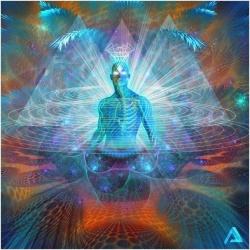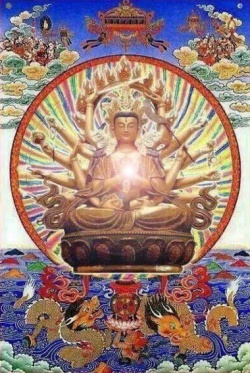Oneness of body and mind
<poem> oneness of body and mind 色心不二 (Jpn shikishin-funi )
Also, non-duality of body and mind.
The principle that the two seemingly distinct phenomena of body, or the physical aspect of life, and mind, or its spiritual aspect, are essentially non-dual, being two integral phases of a single reality.
One of the ten onenesses formulated by Miao-lo (711-782) in his Annotations on "The Profound Meaning of the Lotus Sutra."
In the Japanese term shikishin-funi, shiki means that which has form and color, or physical existence, while shin means that which has neither form nor color, or spiritual existence, such as the mind, heart, and soul.
Funi is an abbreviation of nini-funi, which indicates "two (in phenomena) but not two (in essence)."
This means that the material and the spiritual are two separate classes of phenomena, but non-dual and indivisible in essence, because they are both aspects of the same reality.
In the above annotations, Miao-lo states that, from the viewpoints of the whole and its components, life at a single moment is the whole, while body and mind are its components.
Neither body nor mind is a separate entity; there is not one without the other.
They are inseparable components of life.
In the Lotus Sutra, the principle of the ten factors of life represents the oneness of body and mind.
The ten factors are listed in the "Expedient Means" (second) chapter of the sutra, where it states that the true aspect of all phenomena consists of "appearance, nature, entity, power, influence, internal cause, relation, latent effect, manifest effect, and their consistency from beginning to end."
On "The Profound Meaning" states: "Appearance exists only in what is material; nature exists only in what is spiritual.
Entity, power, influence, and relation in principle combine both the material and the spiritual.
Internal cause and latent effect are purely spiritual; manifest effect exists only in what is material."
The Record of the Orally Transmitted Teachings reads, "Concerning the term dedication of one's life 'dedication' refers to the element of physical form as it pertains to us, while 'life' refers to the element of mind as it pertains to us.
But the ultimate teaching tells us that form and mind are not two."
See also; ten onenesses.


